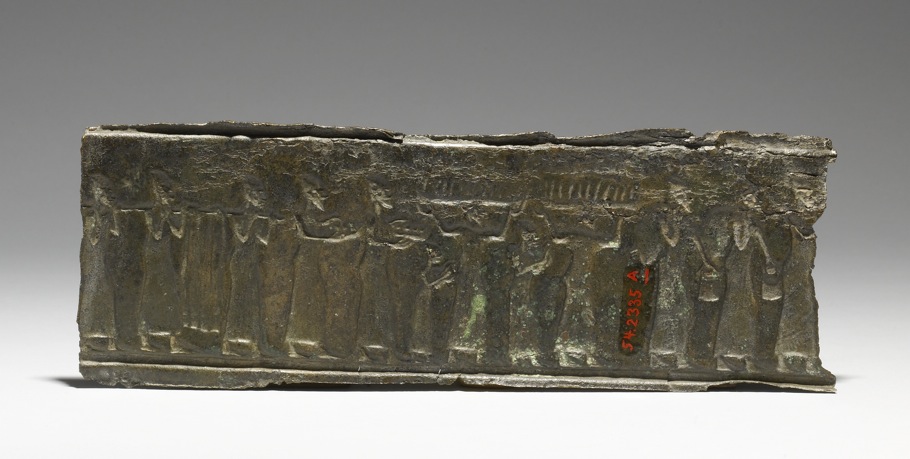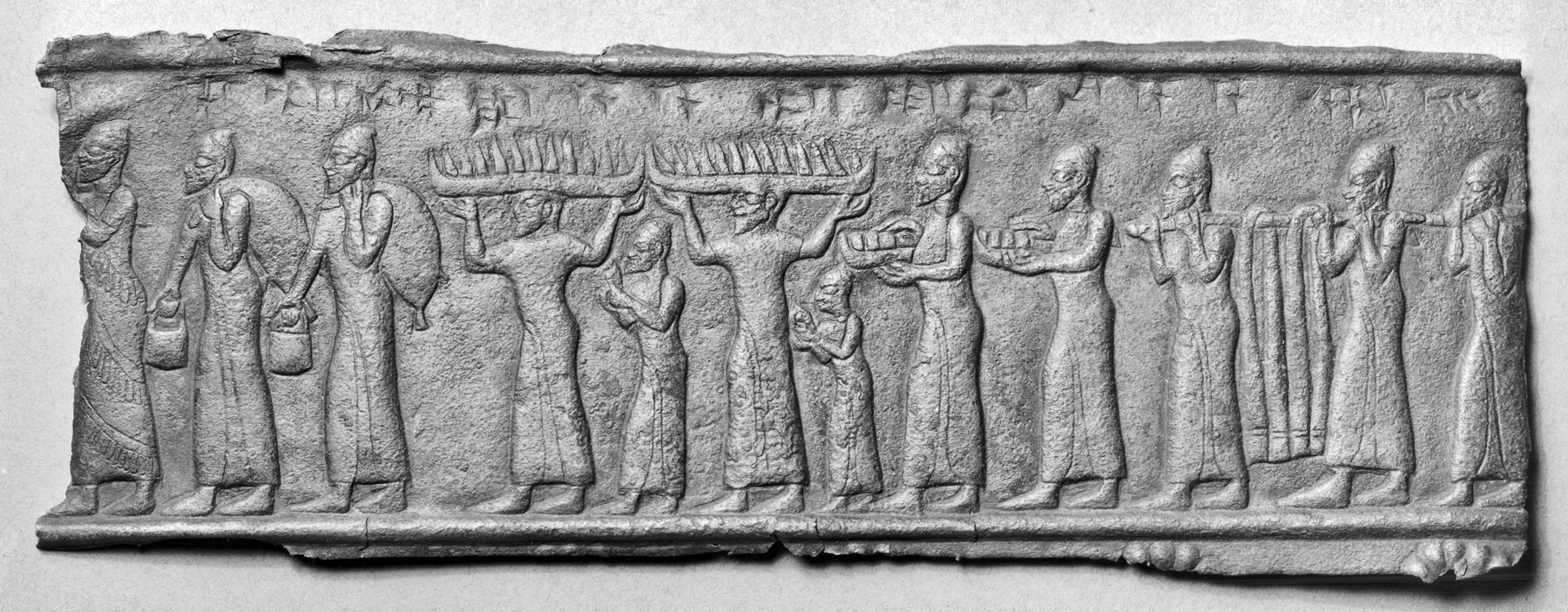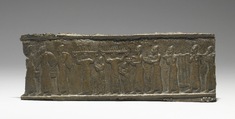Fragment of Band from a Gate
(Ancient Near East )
During the Neo-Assyrian period (911-612 BCE), royal artists frequently depicted major military conquests. This bronze fragment, along with Walters 54.2335B, originally belonged to a 21 foot high wooden gate of a temple at Balawat, just northeast of the capital, Nimrud. Together with nearly 265 feet of narrative strips from the same gate now in the British Museum, they illustrate in intricate detail the numerous military campaigns of King Shalmaneser III.
In this fragment, Syrian porters in long robes and conical hats carry tribute to the Assyrian camp. They bring items for which Syria was famous: wine in skin bags; trays, possibly bearing ivory tusks; and heavy rolls of wool, probably dyed purple. The inscription at the top labels these as gifts from the coastal Phoenician cities of Tyre and Sidon.
Inscription
Provenance
Provenance (from the French provenir, 'to come from/forth') is the chronology of the ownership, custody, or location of a historical object. Learn more about provenance at the Walters.
Hormuzd Rassam, by 1902, [mode of acquisition unknown] [54.2335A=Rassam Na]. Joseph Brummer, Paris and New York, by 1925, by purchase [Brummer inv. no. P822]; Sale, Brummer Auction, New York, 1949, Part II, p. 19, no. 85; Walters Art Museum, 1949, by purchase.
Exhibitions
| 2014-2015 | From Assyria to Iberia: Crossing Continents at the Dawn of the Classical Age. The Metropolitan Museum of Art, New York. |
| 1978 | In Search of Ancient Treasure: 40 Years of Collecting. The Walters Art Gallery, Baltimore. |
Geographies
Iraq, Balawat (Imgur-Enlil) (Place of Origin)
Measurements
H: 3 15/16 x W: 11 x D: 3/16 in. (10 x 28 x 0.4 cm)
Credit Line
Museum purchase, 1949
Location in Museum
Not on view
Accession Number
In libraries, galleries, museums, and archives, an accession number is a unique identifier assigned to each object in the collection.
In libraries, galleries, museums, and archives, an accession number is a unique identifier assigned to each object in the collection.
54.2335A







